Letter Writing
During the mid-19th century, writing letters was the primary form of communication, both far and near. People sent news, greetings, invitations, and more through the mail. Letters were carried around the world by trains, boats, and horses – or just across town by a servant or local mail carrier. When sent long distances, they could take weeks, even months, to reach their destination.
Until well into the second half of the 19th century, the U.S. Postal Service did not deliver mail directly to homes. Instead, a servant or household member was sent to the local post office once or twice a day to collect the letters. Many New Yorkers hired either officially sanctioned postal “carriers” or independent “local post” companies to bring mail straight to their doors.
|
In 1853, the Tredwells’ younger son, 26-year-old Samuel Lenox Tredwell, was a merchant with a crockery business at 195 Pearl Street, near the seaport. The Museum has in its collection a number of documents related to Samuel’s business ventures, including the letter below, addressed to the Commissioner of Jurors.
New York at the time was the most populous city in the United States; still, most of the residents still lived downtown, close to the seaport. Samuel, his wife, Louisa, and their young daughter, Lizzie, lived on East 25th Street. Today, it is difficult to imagine hand-delivering a postponement for jury duty.
|
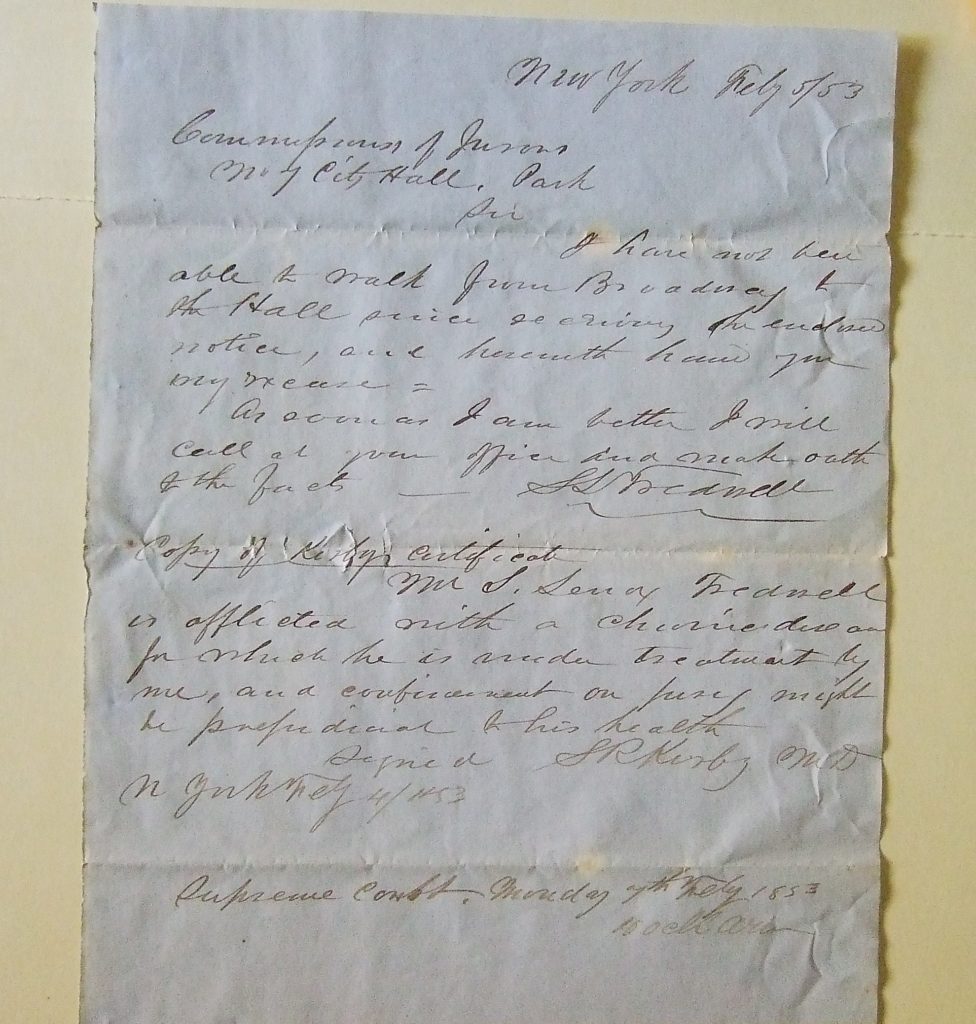 |
… |
“New York Febry 5/53
Commissioner of Jurors
NY City Hall Park
Sir,
I have not been able to walk from Broadway to the Hall since receiving the enclosed notice, and herewith have you my excuse.
As soon as I am better I will call at your office and make oath of the facts.
S. L. Tredwell
Mr. S. Lenox Tredwell is afflicted with a chronic disease for which he is under treatment by me and confinement on a jury might be prejudicial to his health.
Signed S. R. King, MD
N York Feby 4 / 1853
Supreme Court, Monday 7th Feby 1853
10 o’clock”
|
|
Letter, Samuel Lenox Tredwell to Commissioner of Jurors, 1853
MHM 2002.4605.10
|
…
|
Women were primarily responsible for maintaining the family’s personal correspondence. They regularly exchanged letters with family members and friends, writing several letters a day. Many women owned a desk or writing box especially for this purpose.
In the letter below, from 1868, Samuel Tredwell’s first wife, Louisa, writes to her mother. Louisa, Samuel, and their daughter, Lizzie, lived in Fairfield, Connecticut, at the time.
|

Letter, Louisa Thorp Tredwell to her mother, Julia Thorp, 1868
MHM 2002.4601.21a
|
… |
“Fairfield, Conn.
Tuesday morning
My Dear Mother,
Your kind invitation to spend Thanksgiving with you was received yesterday – I regret exceedingly I cannot accept. Our family intend being all together and as Julia is visiting at home I would like to be with them all.
I have been very busy getting Lizzie ready for school – where she will go next Monday. She has wanted to come to New York but had too much to attend to.
Julia has her little boy Johnny with her – the daughters are at home with their father. Julia expects to make us a good long visit – And I think they will all board in the city for a few weeks after the holidays.
Pa is feeling very miserable this morning – he slept very little last night. You know his breathing troubles him very much, and the palpitations of his heart.
We are going to have another beautiful day – the sun is shining and it is looking out of doors as if I would enjoy a drive. Lizzie is going with Emma Holt in the light wagon. They are very independent going by themselves.
Your affectionate daughter,
Louisa Tredwell
Tuesday morning
November 24th 1868”
|
…
|
Signets were used to seal letters with wax. A hand-folded letter sealed with wax could eliminate the need for an envelope. It also assured that the letter was not read by any but the intended if the seal was not broken. The signet below bears the initials EAST, for Elizabeth Alden Seabury Tredwell (1885-1973), the younger daughter of Samuel Lenox Tredwell.
|
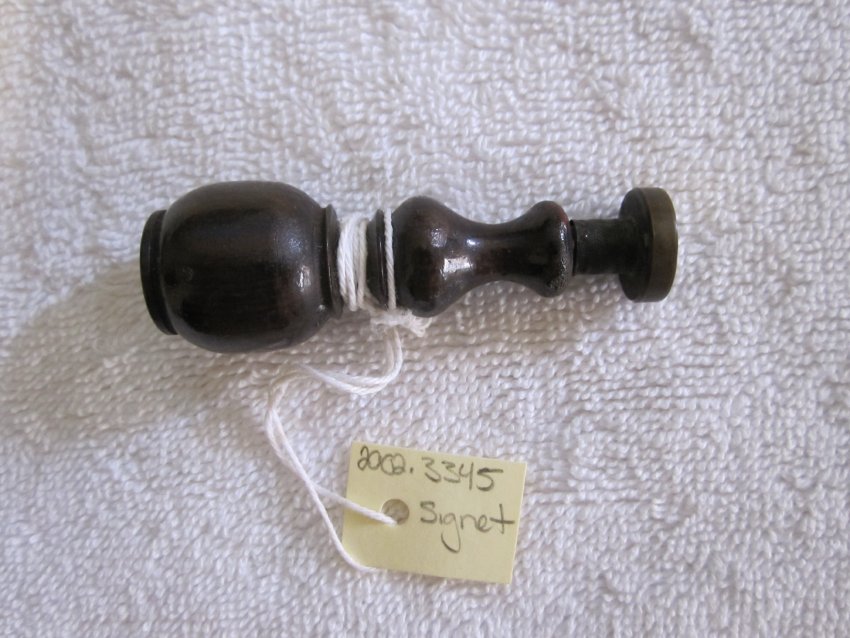 |
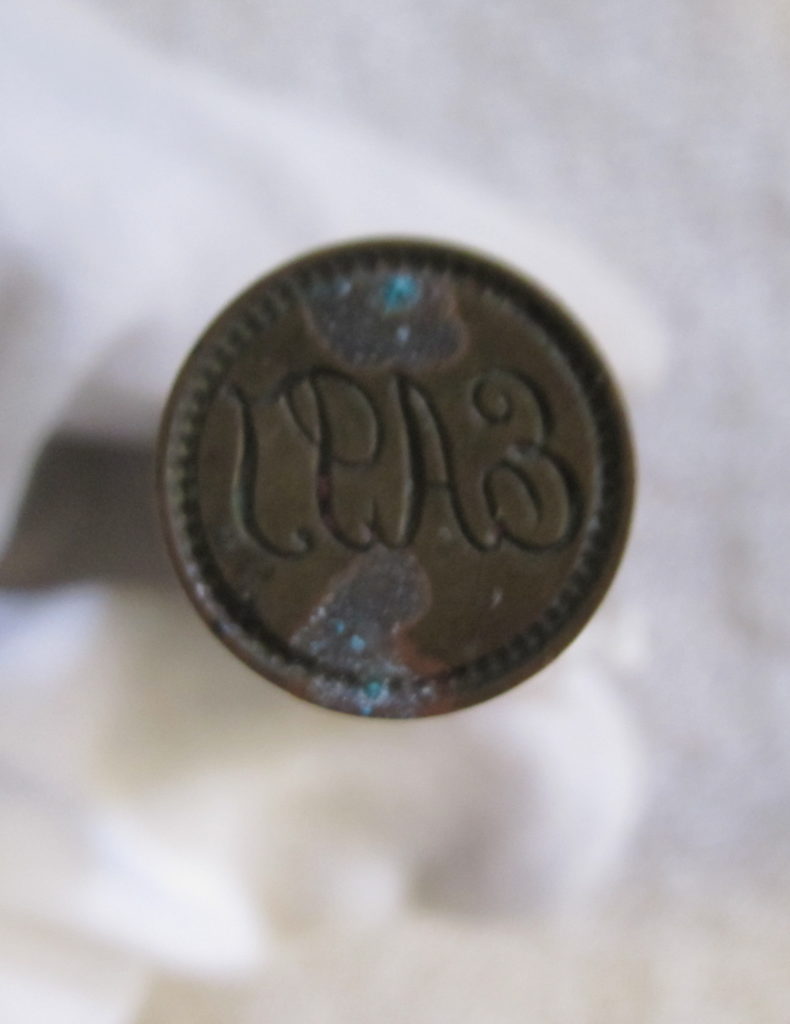 |
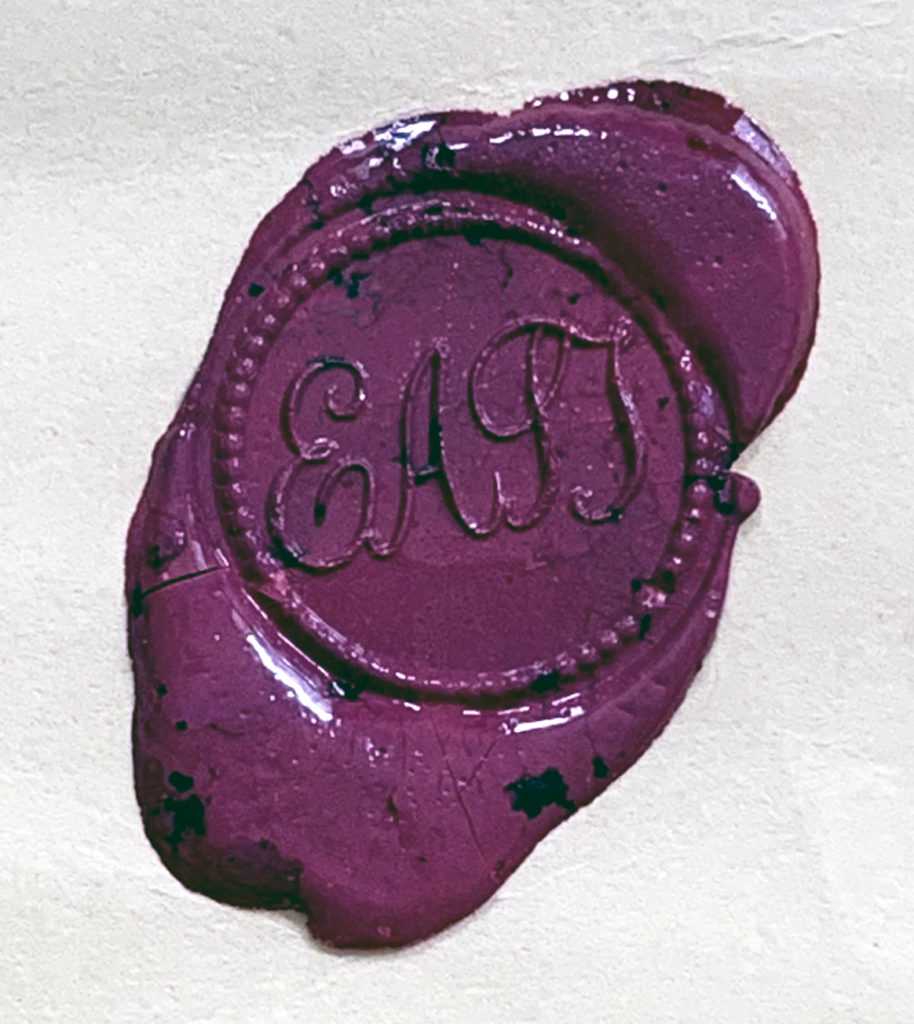 |
|
Signet, 1900-1912
Wood, metal
MHM 2002.3345
|
…
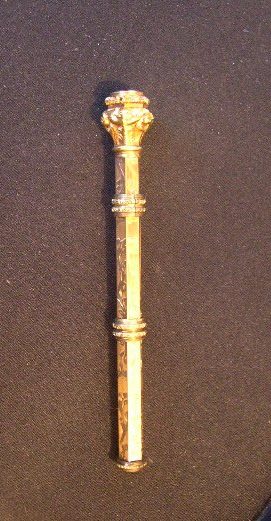
Mechanical Pencil, 1840
Gold, glass
MHM 2002.3222
|
… |
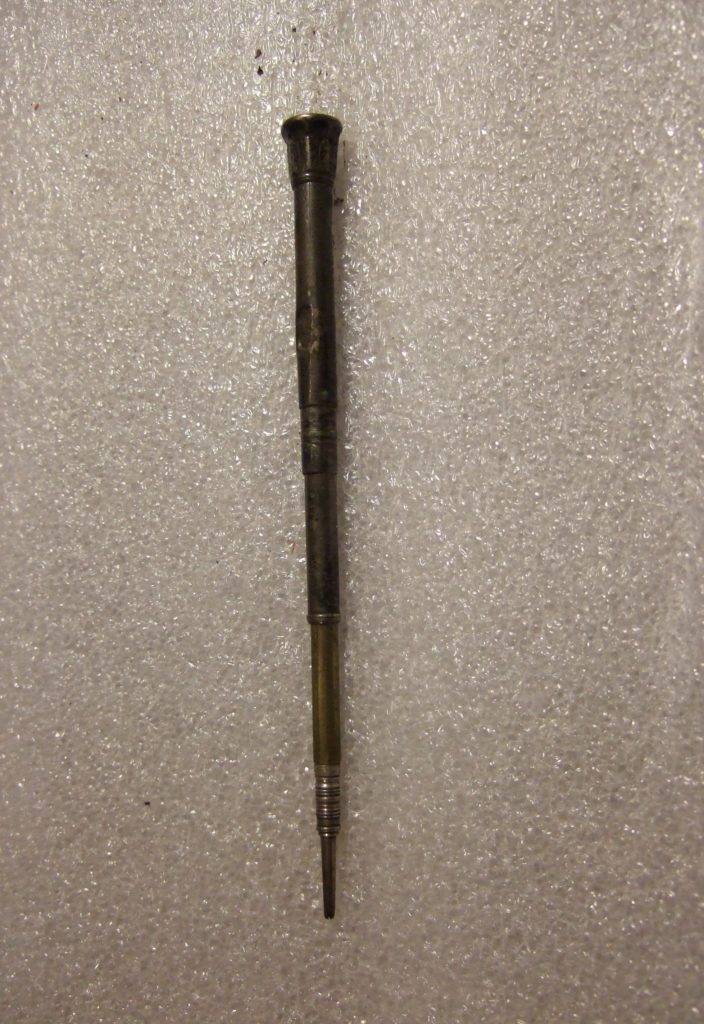
Pen, 19th century
Brass, silver
MHM 2002.3338
|
…
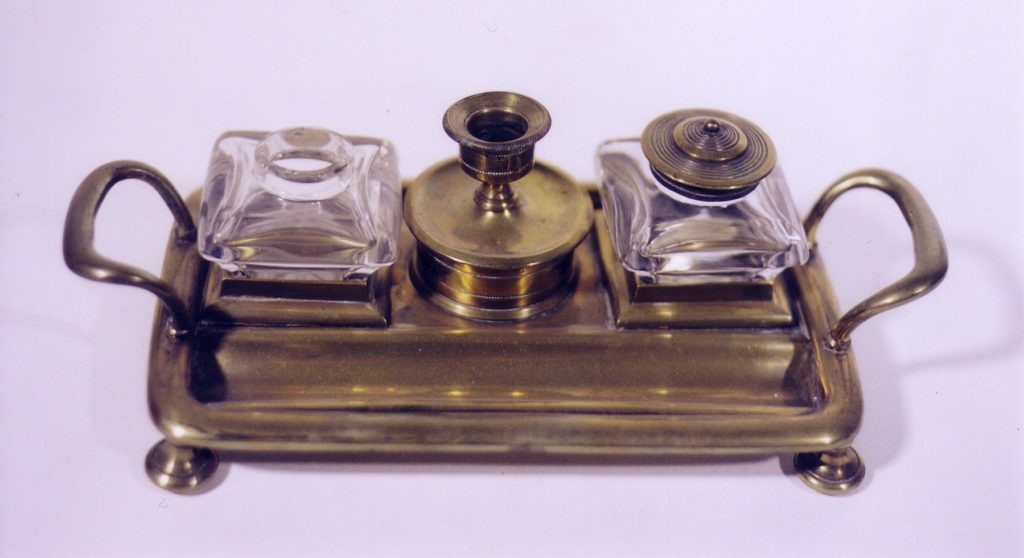
Inkstand, 1860-1890
Brass, glass
MHM 2002.3205
|
…
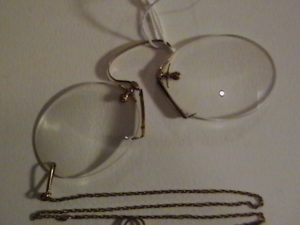
Glasses, 19th century
Glass, brass
MHM 2002.3230
|
… |

Letter opener, c. 1880
Mother-of-pearl, metal
MHM 2002.3227
|












